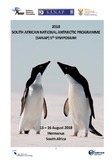Abstract:
The Southern Ocean is inhabited by both the Antarctic fur seal Arctocephalus gazella (AFS. and the Subantarctic fur seal A. tropicalis (SAFS.. While they are closely related and show a similar degree of sexual dimorphism, they exhibit differences in life history, with AFS weaning at a considerably earlier age. Although the foraging ecology of adult females of both species is well known, the influence of ontogeny and sex is still poorly understood. The teeth of pinnipeds grow incrementally, with each dentine layer reflecting chemical elements deposited during a specific period of the animal’s life. By serially micro-sampling and analysing carbon and nitrogen stable isotopes from each layer, we obtained retrospective information on the foraging environment and trophic level of the individuals at the time when dentine was deposited. Our data emphasized the influence of life history on stable isotope dentine values when comparing juveniles of both species. Immediately following weaning, AFS experienced a dramatic change in trophic level that is not evident in SAFS, suggesting a steeper period of adaptation to nutritional independence. This phase in AFS is characterized by a diet of a lower trophic level than that of older individuals. Sex influenced foraging location in both species with adult females targeting more southerly waters on average. A more striking sex difference was found in the nitrogen stable isotope data in SAFS pups. Since the pups are still suckling, the higher ?15N of female pups is unlikely to be due to their mother’s foraging behaviour, but would more likely have originated from the differing physiology of male and female pups. These longitudinal data show specialization in fur seals, including of closely related and sympatric species. Traditional assessments of trophic level based on one component of the population will need to be reassessed in this light. - Abstract as displayed in the - Abstract booklet. The presentation on the day may differ from the - Abstract.

